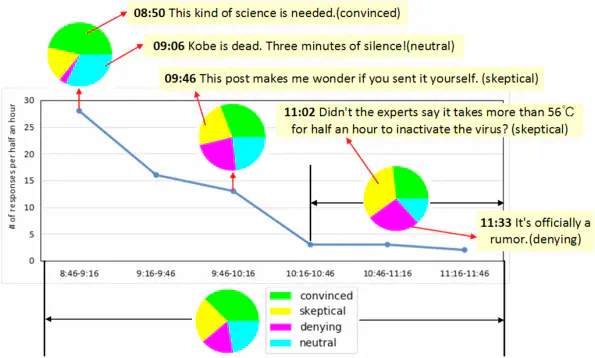
Abstract
Recently, fake news has been readily spread by massive amounts of users in social media, and automatic fake news detection has become necessary. The existing works need to prepare the overall data to perform detection, losing important information about the dynamic evolution of crowd opinions, and usually neglect the issue of uneven arrival of data in the real world. To address these issues, in this article, we focus on a kind of approach for fake news detection, namely progressive detection, which can be achieved by the dynamic Probabilistic Graphical Model. Based on the observation on real-world datasets, we adaptively improve the Kalman Filter to the Labeled Variable Dimension Kalman Filter (LVDKF) that learns two universal patterns from true and fake news, respectively, which can capture the temporal information of time-series data that arrive unevenly. It can take sequential data as input, distill the dynamic evolution knowledge regarding a post, and utilize crowd wisdom from users’ responses to achieve progressive detection. Then we derive the formulas using the Forward, Backward, and EM Algorithm, and we design a dynamic detection algorithm using Bayes’ theorem. Finally, we design experimental scenarios simulating progressive detection and evaluate LVDKF on two public datasets. It outperforms the baseline methods in these experimental scenarios, which indicates that it is adequate for progressive detection.